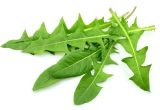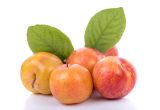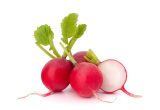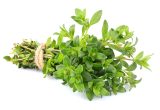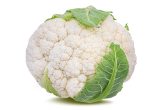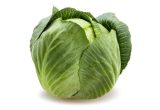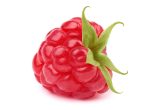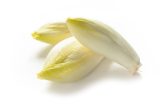Chives

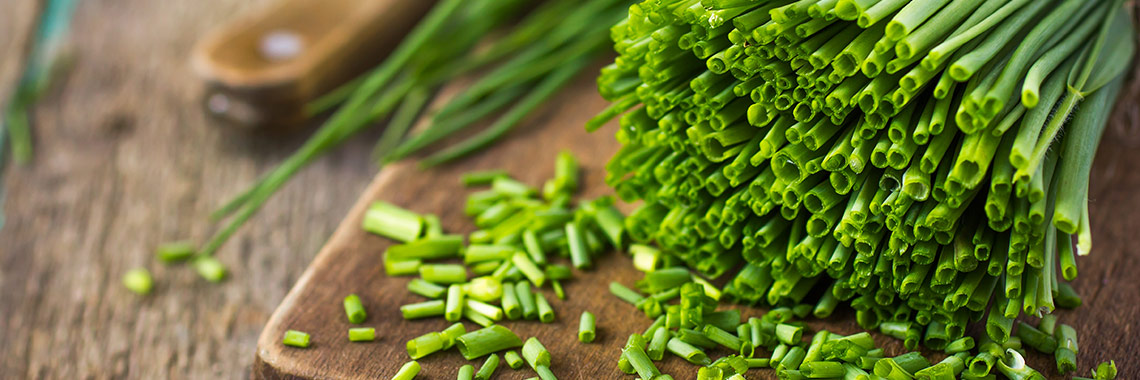
Description
- Chives (Allium schoenoprasum) belong to the Amaryllidaceae family (related to the Liliaceae and Alliaceae families).
- Chive leaves are commonly used in food (Rattanachaikunsopon, 2008). The flowers can also be eaten.
PHYSICAL AND ORGANOLEPTIC CHARACTERISTICS
- Analysis of a methanolic extract of chive flowers revealed the presence of 8 anthocyanins, including 4 anthocyanin-flavonol complexes, which are pigments responsible for their purple colour (Fossen, 2000).
- The other 4 anthocyanins are cyanidin 3-acetylglucoside, cyanidin 3-glucoside, cyanidin 3-(6-malonylglucoside) and cyanidin 3-(3,6-dimalonylglucoside) (Fossen, 2000).
- Chives also contain chlorophyll and carotenoid pigments (Iosin, 2017). Chlorophyll is responsible for their green colour and masks the orange colour of carotenoids. Both pigments are also antioxidants.
- Chives belong to the same family as garlic, onion and shallot. However, their taste is a little more mild than that of the related species (Rattanachaikunsopon, 2008).
- Among the 42 volatile compounds identified, allyl methyl sulphides and dimethyl sulphides are the main ones (Sunyoung, 2016).
- Enzymatic hydrolysis of several precursors of sulphur-containing aroma compounds is responsible for the unique taste and odour of Allium species (Yang MH, 2017).
COMPOSITION CHARACTERISTICS (excluding macronutrients, vitamins and minerals)
- Chives contain phenolic compounds among which the main ones are gallic acid, coumaric acid, ferulic acid and rutin (Kucekova, 2011).
- They also provide diallyl sulphides: disulphide, diallyl trisulphide, diallyl tetrasulphide and diallyl monosulphide (which has the lowest concentration) (Rattanachaikunsopon, 2008).
- Three new sulphur-containing ring compounds, folionins A1, A2 and B, have been isolated from chives (Fukaya, 2019).
- Argentine researchers characterised and compared the antioxidant and antiplatelet activities of the most commonly consumed Allium species. The results revealed that chives had the highest antioxidant activity, while the most potent antiplatelet agents were garlic and shallot (Beretta, 2017; Gunawan, 2019).
- Significantly positive correlations were found between antioxidant activity, total phenolic compounds and total organosulphur content. The phenolic compounds found in chives are: catechin, epigallocatechin and epicatechin gallate (Beretta, 2017).
- The most cultivated Allium species, including chives, contain notable amounts of biologically active compounds such as flavonoids, organosulphur compounds (allicin), triterpenoids and saponins. Numerous studies have confirmed their significant antibacterial, anti-inflammatory, antiproliferative and anticancer activities (Fredotovic, 2018; Siringoringo, 2018).
FRESH
The following values are approximate and depend on variety, season, ripeness, cultivation conditions, etc.
Chives are low in energy* as they provide an average of 29.70 calories (kcal) per 100 g, i.e. 124 kJ. However, they are used as a flavouring, so such a quantity is rarely consumed. Therefore, for a 5 g portion, chives contain 1.48 calories (kcal), i.e. 6.20 kJ.
COMPOSITION TABLES
For each nutrient, the tables provide information on the content, minimum and maximum values for 100 g net of fresh chives, while the percentage of the Dietary Reference Values (DRVs) is calculated for a 5 g portion.
*Regulation (EC) No 1924/2006 of the European Parliament and of the Council of 20 December 2006 on nutrition and health claims made on foods.
MACRONUTRIENTS
| Constituent (g) |
Average content
per 100g |
Min-Max per 100g |
Average content
per 5g |
DRV% * |
|---|---|---|---|---|
| Water | 90,9 | 0 - 93,40 | 4,55 | - |
| Fibers | 3,19 | 2,40 - 3,90 | 0,16 | - |
| Carbohydrates | 2,10 | 1,50 - 4,70 | 0,11 | 0,04 |
| Sugars | 1,75 | 1,50 - 2,33 | 0,09 | 0,10 |
| Lipids | 0,52 | 0,19 - 0,73 | 0,03 | 0,04 |
| Saturated fat | 0,15 | 0,032 - 0,60 | 0,01 | 0,04 |
| Protein | 2,57 | 1,83 - 3,27 | 0,13 | 0,26 |
| Constituent (g) | Amount | Min-Max | DRV% |
|---|---|---|---|
| Water | Ciqual 2020 | - | - |
| Fibers | Ciqual 2020 | - | - |
| Carbohydrates | Ciqual 2020 | - | Règlement (UE) N°1169/2011 du parlement Européen et du conseil du 25 octobre 2011 |
| Sugars | Ciqual 2020 | - | Règlement (UE) N°1169/2011 du parlement Européen et du conseil du 25 octobre 2011 |
| Lipids | Ciqual 2020 | - | Règlement (UE) N°1169/2011 du parlement Européen et du conseil du 25 octobre 2011 |
| Saturated fat | Ciqual 2020 | - | Règlement (UE) N°1169/2011 du parlement Européen et du conseil du 25 octobre 2011 |
| Protein | Ciqual 2020 | - | Règlement (UE) N°1169/2011 du parlement Européen et du conseil du 25 octobre 2011 |
Zoom on carbohydrates
- The carbohydrate content is 0.11 g per 5 g serving
- This quantity corresponds to 2.10 g per 100 g, which is below the average content found in aromatic herbs: approximately 7.85 g per 100 g.
- Chives are low in sugar* as they contain less than 5 g per 100 g, i.e. 1.75 g per 100 g.
Zoom on fibres
- Chives provide 3.19 g per 100 g. This quantity is lower than the average amount of fibre present in aromatic herbs (6 g per 100 g).
- For one serving of fresh chives (5 g), the amount of fibre is 0.16 g.
Zoom on proteins
- For a 5 g serving, chives contain 0.13 g of protein.
- The amount of protein present in 100 g of chives (2.57 g) is lower than the average quantity present in aromatic herbs (4.22 g per 100 g).
Zoom on lipids
- Chives contain 0.03 g of fat in a 5 g serving.
- They are low in fat* as the fat content in 100 g of chives (0.52 g) is less than 3 g. This is lower than the average amount found in aromatic herbs (1.18 g per 100 g).
*Regulation (EC) No 1924/2006 of the European Parliament and of the Council of 20 December 2006 on nutrition and health claims made on foods.
MINERALS AND TRACE ELEMENTS
| Constituent |
Average content
per 100g |
Min-Max per 100g |
Average content
per 5g |
DRV% * |
|---|---|---|---|---|
| Calcium (mg) | 92,80 | 25,90 - 132 | 4,64 | 0,58 |
| Chloride (mg) | - | - | - | - |
| Copper (mg) | 0,10 | 0,083 - 0,16 | 0,01 | 0,50 |
| Iron (mg) | 1,31 | 1 - 2 | 0,07 | 0,47 |
| Iodine (µg) | 2,20 | 0,65 - 5,20 | 0,11 | 0,07 |
| Magnesium (mg) | 23,80 | 12 - 42 | 1,19 | 0,32 |
| Manganese (mg) | 0,85 | 0,16 - 5,30 | 0,04 | 2,13 |
| Phosphorus (mg) | 46,30 | 37 - 64,90 | 2,32 | 0,33 |
| Potassium (mg) | 275 | 232 - 296 | 13,75 | 0,69 |
| Selenium (µg) | 0,35 | 0,10 - 0,60 | 0,02 | 0,03 |
| Sodium (mg) | 11,50 | 2,70 - 44 | 0,58 | - |
| Zinc (mg) | 0,45 | 0,39 - 0,56 | 0,02 | 0,23 |
| Constituent | Amount | Min-Max | DRV% |
|---|---|---|---|
| Calcium (mg) | Ciqual 2020 | - | Règlement (UE) N°1169/2011 du parlement Européen et du conseil du 25 octobre 2011 |
| Chloride (mg) | Ciqual 2020 | - | Règlement (UE) N°1169/2011 du parlement Européen et du conseil du 25 octobre 2011 |
| Copper (mg) | Ciqual 2020 | - | Règlement (UE) N°1169/2011 du parlement Européen et du conseil du 25 octobre 2011 |
| Iron (mg) | Ciqual 2020 | - | Règlement (UE) N°1169/2011 du parlement Européen et du conseil du 25 octobre 2011 |
| Iodine (µg) | Ciqual 2020 | - | Règlement (UE) N°1169/2011 du parlement Européen et du conseil du 25 octobre 2011 |
| Magnesium (mg) | Ciqual 2020 | - | Règlement (UE) N°1169/2011 du parlement Européen et du conseil du 25 octobre 2011 |
| Manganese (mg) | Ciqual 2020 | - | Règlement (UE) N°1169/2011 du parlement Européen et du conseil du 25 octobre 2011 |
| Phosphorus (mg) | Ciqual 2020 | - | Règlement (UE) N°1169/2011 du parlement Européen et du conseil du 25 octobre 2011 |
| Potassium (mg) | Ciqual 2020 | - | Règlement (UE) N°1169/2011 du parlement Européen et du conseil du 25 octobre 2011 |
| Selenium (µg) | Ciqual 2020 | - | Règlement (UE) N°1169/2011 du parlement Européen et du conseil du 25 octobre 2011 |
| Sodium (mg) | Ciqual 2020 | - | - |
| Zinc (mg) | Ciqual 2020 | - | Règlement (UE) N°1169/2011 du parlement Européen et du conseil du 25 octobre 2011 |
Zoom on minerals and trace elements
- For a 5 g portion, the minerals and trace elements are present in quantities representing less than 3% of DRVs.
VITAMINS
| Constituent |
Average content
per 100g |
Min-Max per 100g |
Average content
per 5g |
DRV% * |
|---|---|---|---|---|
| Provitamin A Beta-carotene (µg) | 1 610 | 598 - 2610 | 80,50 | - |
| Vitamin A equivalent (µg) | 268,33 | 99,67 - 435 | 13,42 | 1,68 |
| Vitamin B1 (mg) | 0,065 | 0,032 - 0,15 | 0 | 0,30 |
| Vitamin B2 (mg) | 0,12 | 0,08 - 0,22 | 0,01 | 0,43 |
| Vitamin B3 (mg) | 0,57 | 0,46 - 0,65 | 0,03 | 0,18 |
| Vitamin B5 (mg) | 0,19 | 0,075 - 0,32 | 0,01 | 0,16 |
| Vitamin B6 (mg) | 0,12 | 0,061 - 0,35 | 0,01 | 0,43 |
| Vitamin B9 (µg) | 78,30 | 64 - 105 | 3,92 | 1,96 |
| Vitamin C (mg) | 39,70 | 18,80 - 146 | 1,99 | 2,48 |
| Vitamin E (mg) | 0,99 | 0,21 - 1,86 | 0,05 | 0,41 |
| Vitamin K1 (µg) | 260 | 207 - 310 | 13 | 17,33 |
| Constituent | Amount | Min-Max | DRV% |
|---|---|---|---|
| Provitamin A Beta-carotene (µg) | Ciqual 2020 | - | - |
| Vitamin A equivalent (µg) | Calcul à partir de la valeur Provitamine A Béta-carotène** | - | Règlement (UE) N°1169/2011 du parlement Européen et du conseil du 25 octobre 2011 |
| Vitamin B1 (mg) | Ciqual 2020 | - | Règlement (UE) N°1169/2011 du parlement Européen et du conseil du 25 octobre 2011 |
| Vitamin B2 (mg) | Ciqual 2020 | - | Règlement (UE) N°1169/2011 du parlement Européen et du conseil du 25 octobre 2011 |
| Vitamin B3 (mg) | Ciqual 2020 | - | Règlement (UE) N°1169/2011 du parlement Européen et du conseil du 25 octobre 2011 |
| Vitamin B5 (mg) | Ciqual 2020 | - | Règlement (UE) N°1169/2011 du parlement Européen et du conseil du 25 octobre 2011 |
| Vitamin B6 (mg) | Ciqual 2020 | - | Règlement (UE) N°1169/2011 du parlement Européen et du conseil du 25 octobre 2011 |
| Vitamin B9 (µg) | Ciqual 2020 | - | Règlement (UE) N°1169/2011 du parlement Européen et du conseil du 25 octobre 2011 |
| Vitamin C (mg) | Ciqual 2020 | - | Règlement (UE) N°1169/2011 du parlement Européen et du conseil du 25 octobre 2011 |
| Vitamin E (mg) | Ciqual 2020 | - | Règlement (UE) N°1169/2011 du parlement Européen et du conseil du 25 octobre 2011 |
| Vitamin K1 (µg) | Ciqual 2020 | - | Règlement (UE) N°1169/2011 du parlement Européen et du conseil du 25 octobre 2011 |
Zoom on vitamins
- Chives are a source of vitamin K1, as they provide the equivalent of 17.33% of DRVs, i.e. 13 µg for a 5 g portion.
- The other vitamins are present in quantities representing less than 3% of DRVs for a 5 g portion.
*Calculation made: Beta-Carotene / 6 + retinol
POLYPHENOLS
Constituent
(mg)
Average content
per 100mg
Min-Max
per 100mg
Average content
per 5mg
Flavonoids
(mg)
18,37
6,60 - 31,70
0,92
of which
Flavonols
(mg)
18,22
6,60 - 31,40
0,91
of which
Flavones
(mg)
0,15
0 - 0,30
0,01
Total polyphenols
18,37
6,60 - 31,70
0,92
Constituent
(mg)
Amount
Min-Max
Flavonoids
Phénol-Explorer version 3.6 Méthode utilisée : chromatographie après hydrolyse
-
of which
Flavonols
Phénol-Explorer version 3.6 Méthode utilisée : chromatographie après hydrolyse
-
of which
Flavones
Phénol-Explorer version 3.6 Méthode utilisée : chromatographie après hydrolyse
-
Total polyphenols
Phénol-Explorer version 3.6 Méthode utilisée : chromatographie après hydrolyse
-
| Constituent (mg) |
Average content
per 100mg |
Min-Max per 100mg |
Average content
per 5mg |
|---|---|---|---|
| Flavonoids (mg) | 18,37 | 6,60 - 31,70 | 0,92 |
| of which Flavonols (mg) | 18,22 | 6,60 - 31,40 | 0,91 |
| of which Flavones (mg) | 0,15 | 0 - 0,30 | 0,01 |
| Total polyphenols | 18,37 | 6,60 - 31,70 | 0,92 |
| Constituent (mg) | Amount | Min-Max |
|---|---|---|
| Flavonoids | Phénol-Explorer version 3.6 Méthode utilisée : chromatographie après hydrolyse | - |
| of which Flavonols | Phénol-Explorer version 3.6 Méthode utilisée : chromatographie après hydrolyse | - |
| of which Flavones | Phénol-Explorer version 3.6 Méthode utilisée : chromatographie après hydrolyse | - |
| Total polyphenols | Phénol-Explorer version 3.6 Méthode utilisée : chromatographie après hydrolyse | - |
Zoom on polyphenols
- Polyphenols are substances with an antioxidant effect.
- The polyphenols in chives are flavonoids, mainly flavonols (99% of total polyphenols).
Nutrition and health claims
According to the definitions of nutrition claims as presented in Regulation (EC) No 1924/2006 on nutrition and health claims, and in view of the composition of fresh chives, the following claims can be used:
NUTRITION CLAIMS OF CHIVES
- Low in energy (100 g of chives provide less than 40 kcal)
- Low in sugar (100 g of chives contain no more than 5 g of sugar)
- Low in fat (100 g of chives contain less than 3 g of fat)
- Source of vitamin K1 (5 g of chives provide the equivalent of more than 15% of DRVs)
HEALTH CLAIMS (for a consumption of 5 g of chives)
Vitamin K1
- Vitamin K1 contributes to:
- maintenance of normal bones,
- normal blood clotting.
References
- Agence nationale de sécurité sanitaire de l’alimentation, de l’environnement et du travail. Table de composition nutritionnelle des aliments Ciqual 2020. Consultée le 20/08/2020 depuis le site internet Ciqual https://ciqual.anses.fr/
- Beretta HV, Bannoud F, Insani M, Berli F, Hirschegger P, Galmarini CR, Cavagnaro PF. Relationships Between Bioactive Compound Content and the Antiplatelet and Antioxidant Activities of Six Allium Vegetable Species. Food Technol. Biotechnol. 2017;55(2):266-75.
- Fossen T, Slimestad R, Ovstedal DO, Andersen OM. Covalent anthocyanin-flavonol complexes from flowers of chive, Allium schoenoprasum. Phytochemistry. 2000;54(3):317-23.
- Fredotović Z, Puizina J. Edible allium species: chemical composition, biological activity and health effects. Italian Journal of food science. 2018;31(1):1120-770.
- Fukaya M, Nakamura S, Nyoku Y, Nakashima S, Yoneda T, Matsuda H. Cyclic sulfur metabolites from Allium schoenoprasum var. foliosum. Phytochemistry Letters. 2019;29:125-8.
- Gunawan MP. Uji Aktivitas Antioksidan dari Infus dan Ekstrak Daun Kucai (Allium schoenoprasum, L.). Repositori Institusi Universitas Sumatera Utara. 2019;21:302-10.
- Iosin A, Raba DN, Moldovan C, Popa VM, Dumbrava DG. The influence of freezing on the content of vitamin c, chlorophylls and carotenoids in chives (allium schoenoprasum l.). Scien. Tech. Bull-Chem. Food Sci. Eng. 2017;14(XV):49-52.
- Kucekova Z, Mlcek J, Humpolicek P, Rop O, Valasek P, Saha P. Phenolic compounds from Allium schoenoprasum, Tragopogon pratensis and Rumex acetosa and their antiproliferative effects. Molecules. 2011;16(11):9207-17.
- Neveu V, Perez-Jiménez J, Vos F, Crespy V, du Chaffaut L, Mennen L, Knox C, Eisner R, Cruz J, Wishart D, Scalbert A. (2010) Phenol-Explorer: an online comprehensive database on polyphenol contents in foods. Database, doi: 10.1093/database/bap024. Full text (free access)
- Rattanachaikunsopon P, Phumkhachorn P. Diallyl sulfide content and antimicrobial activity against food-borne pathogenic bacteria of chives (Allium schoenoprasum). Biosci Biotechnol Biochem. 2008;72(11):2987-91.
- Règlement (CE) N° 1924/2006 du Parlement européen et du Conseil du 20 décembre 2006 concernant les allégations nutritionnelles et de santé portant sur les denrées alimentaires.
- Règlement (UE) n°1169/2011 du Parlement européen et du Conseil du 25 octobre 2011 concernant l’information des consommateurs sur les denrées alimentaires, modifiant les règlements (CE) n°1924/2006 et (CE) n°1925/2006 du Parlement européen et de Conseil et abrogeant la directive 87/250/CEE de la Commission, la directive 90/496/CEE du Conseil, la directive 1999/10/CE de la Commission, la directive 200/13/CE du Parlement européen et du Conseil, les directives 2002/67/CE et 2008/5/CE de la Commission et le règlement (CE) n°608/2004 de la Commission.
- Règlement (UE) N°432/2012 de la Commission du 16 mai 2012 établissant une liste des allégations de santé autorisées portant sur les denrées alimentaires, autres que celles faisant référence à la réduction du risque de maladie ainsi qu’au développement et à la santé infantiles.
- Siringoringo REN. Uji Aktivitas Antijamur dari Ekstrak Daun Kucai (Allium schoenoprasum L.) Terhadap Candida albicans dan Trichophyton mentagrophytes. Repositori Institusi Universitas Sumatera Utara. 2018;4:106-14.
- Sunyoung K, Dan-Bi K, Sanghee L, Jisu P, Dongbin S, Miyoung Y. Profilage des composés organosulfurés à l’aide du système HPLC-PDA et GC / MS et des activités antioxydantes dans la ciboulette de talonneur (Allium hookeri). Natural Product Research. 2016;30(24):2798-804.
- Yang MH, Kim NH, Heo JD, Rho JR, Ock KJ, Shin EC, Jeong EJ. Comparative Evaluation of Sulfur Compounds Contents and Antiobesity Properties of Allium hookeri Prepared by Different Drying Methods. Journal Hindawi. 2017;3:56-61.




